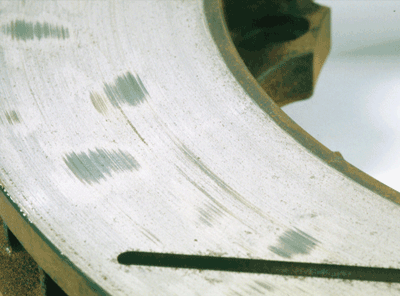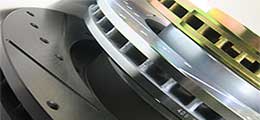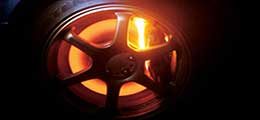
*Source: turbodieselregister.com
One of the most common myths or brake problems that drivers claim to encounter is brake disc “warping” (sometimes even after installing brand new brake rotors and brake pads).
What Is Brake Disc Warping?
Brake disc “warping” is a common term or diagnosis used to describe a distorted brake disc. Drivers who have experienced shuddering or shaking when applying the brakes may easily attribute this problem to brake disc warping. However, assuming that everything was installed properly, this problem is often a result of the uneven transfer of friction material on the brake rotor. Uneven patches of friction material changes the disc thickness variation (DTV), which may cause vibrations and effect brake performance. So the real culprit, in many cases, is not that the rotors are warped, but that there are uneven deposits of the brake pad on the brake rotor which cause vibration or shuddering.
Causes of Unevenly Worn Disc
One of the main causes of this problem is overheating. Using brakes involve a great amount of friction – and this renders the brakes really hot. If a car, depending on its application, does not utilize the right brakes with the necessary heat-dissipating features, then vibrations and shuddering may eventually be a problem.
Below are some causes of unevenly worn disc that lead to brake shudder and vibration:
Low Quality Brake Pads – poor or low quality pads are more prone to overheat, especially if they are used often. More heat the brake pads can handle means there is a good chance an uneven layer of friction material will be transferred onto the brake rotor, which causes vibrations.
Brake Pad Selection – standard brake pads for street use should not be used for racing, while high performance brake pads for racing should not be used for street use. Modern brake pads are made with a certain combination of features that are intended to work within certain temperature ranges. Racing brake pads are made to work well in high temperatures, whereas street brake pads are made to work well in lower temperatures.
Uneven Transfer of Friction Material – If brake pads are used beyond their heat capacity, this will cause uneven patches of materials to be transferred onto the rotor surface. Although these may not be visibly noticeable, it may be felt by the driver as “shudders” during driving.
Warped Hubs – This is a fairly rare occurrence, it does happen sometimes. If you bolt your disc to a warped hub, this will result to vibrations or shudders. Vibrations can also be felt not necessarily because of warped hubs - but because the rusty hub face was not cleaned thoroughly before putting in the brake disc.
Solutions and Prevention
If your car is shuddering during braking and you think that it is probably because of warping - do a little investigating first. Clean your discs and pads and make sure that it is clean from any rust, debris or any other materials that may cause shuddering. Make sure that the hub and wheel flange are flat. Ensure that the disc mounting hardware that you are using is in excellent condition. Make sure that installation has been done using the right procedures necessary, including the appropriate torque recommendations and other specifications.
If the problem persists, another thing that you can do is to change your brake pads. Make sure that your pads are those which are designed for your application and work within a certain temperature range. Of course, there are different types of pads that may better suit your application such as ceramic, semi-metallic or metallic.
Most importantly, break in your brake pads properly. If you have high performance brake pads, follow the brake in instructions provided.









